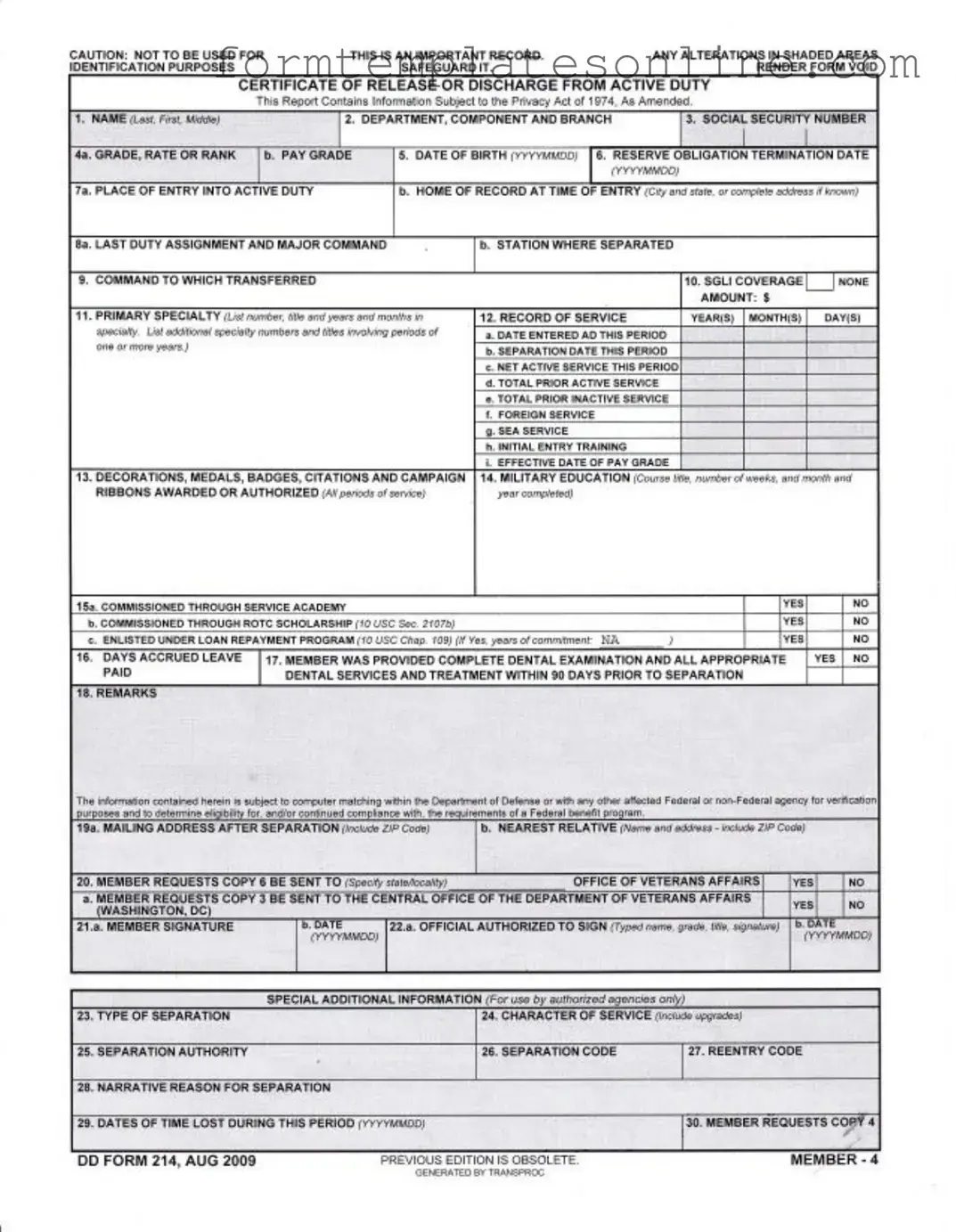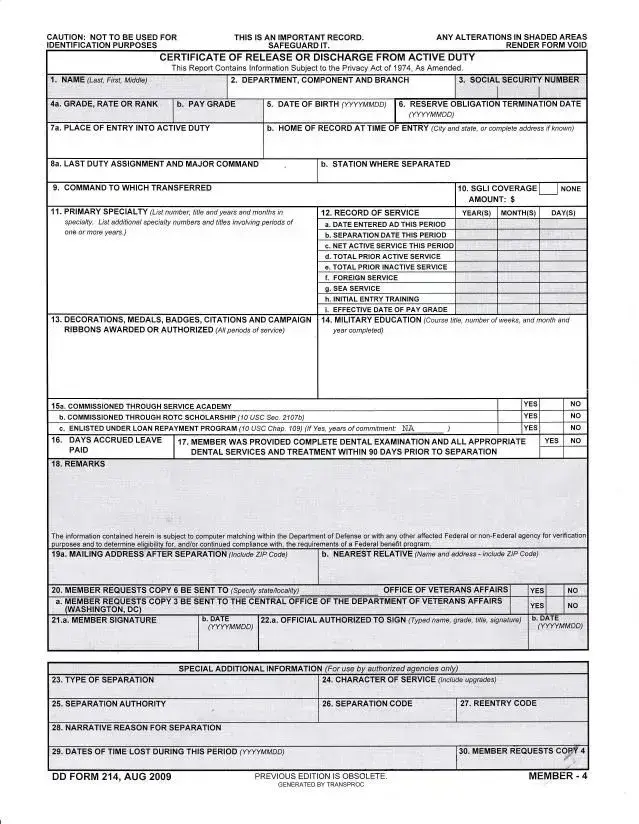What is a DD Form 214?
The DD Form 214, also known as the Certificate of Release or Discharge from Active Duty, is an important document issued to military personnel upon separation from active duty. It provides a summary of a service member's time in the military, including their rank, dates of service, and character of service. This form is crucial for veterans seeking benefits, employment, and educational opportunities.
Why is the DD Form 214 important?
The DD Form 214 serves multiple purposes. It acts as proof of military service, which is necessary for accessing veterans' benefits, including healthcare and education. Employers often request this document during the hiring process to verify military experience. Additionally, it may be needed for applying for loans, housing assistance, and other veteran-related services.
How can I obtain my DD Form 214?
You can request your DD Form 214 through the National Archives or your branch of service. Online requests can be made through the eVetRecs system, or you can submit a Standard Form 180 (SF-180) by mail or fax. Make sure to provide all necessary information to expedite the process.
What should I do if my DD Form 214 has errors?
If you find errors on your DD Form 214, you should contact your branch of service to request a correction. Provide documentation that supports your claim for changes. Corrections can take time, so it’s best to address any issues as soon as possible to avoid complications with benefits or employment.
Can I use my DD Form 214 for identification purposes?
No, the DD Form 214 is not intended for identification purposes. It is a record of military service, and using it as an ID can lead to complications. Always keep it safeguarded and use other forms of identification for official purposes.
What information is included on the DD Form 214?
The DD Form 214 includes essential details such as the service member's name, social security number, branch of service, dates of service, rank, and character of service. It also lists any decorations, medals, and other honors received during service. This information helps provide a comprehensive overview of a veteran's military career.
How do I interpret the character of service on my DD Form 214?
The character of service is a critical part of the DD Form 214. It can be classified as Honorable, General (Under Honorable Conditions), Other Than Honorable, Bad Conduct, or Dishonorable. This classification affects eligibility for benefits and can impact future employment opportunities. Understanding this classification is essential for navigating post-service life.
Is there a time limit for requesting my DD Form 214?
There is no specific time limit for requesting your DD Form 214. However, it is advisable to obtain it as soon as possible after separation from service. Delays can hinder access to benefits and services. Keeping a copy of your DD Form 214 on hand is a good practice for any veteran.

